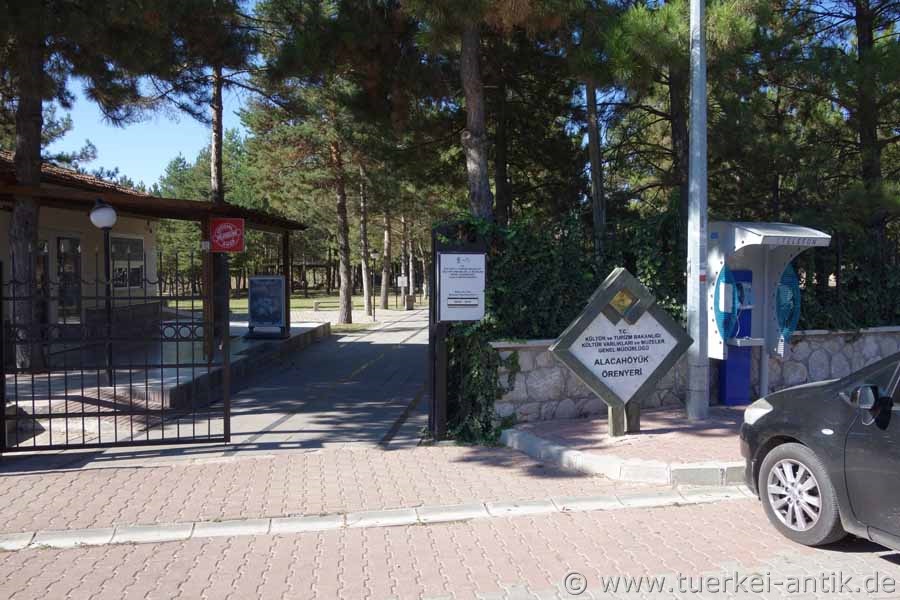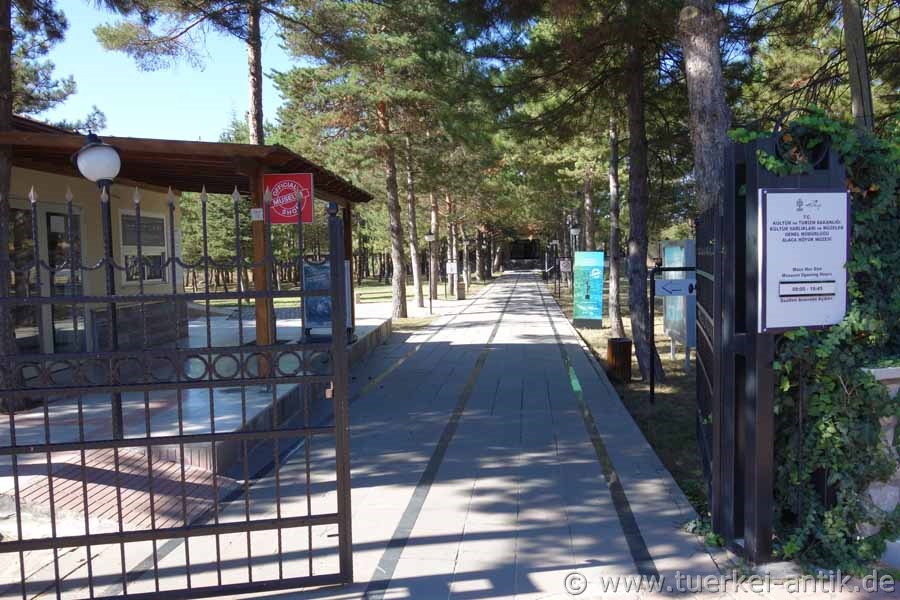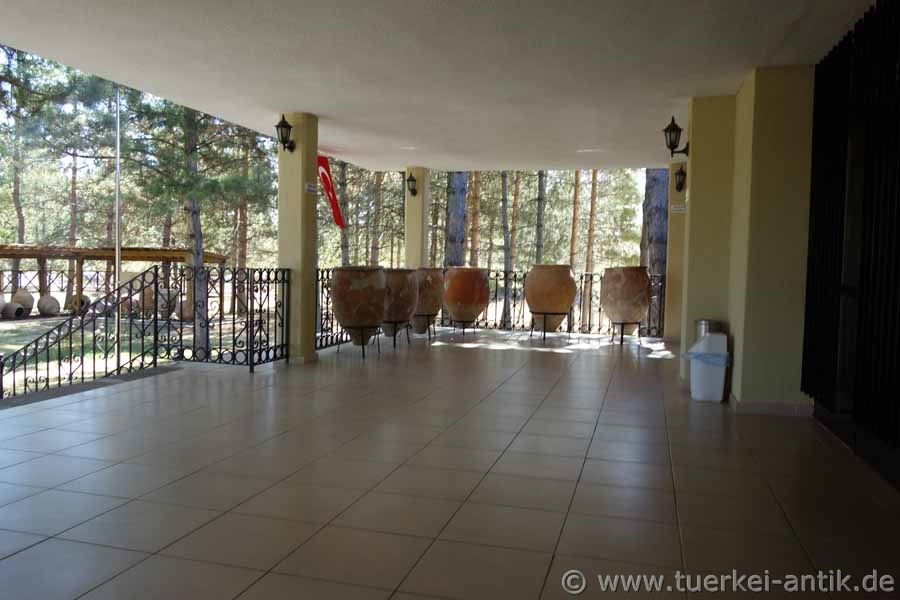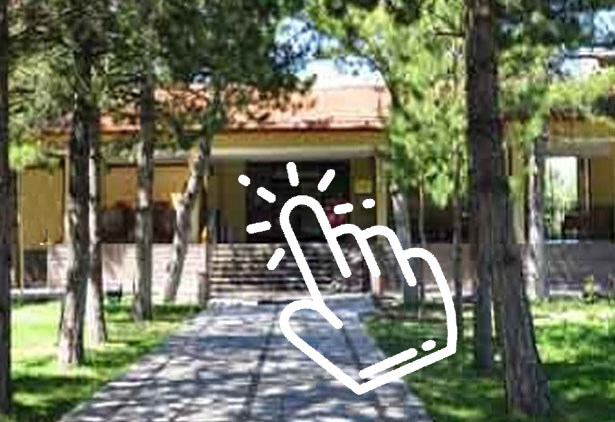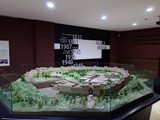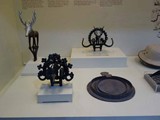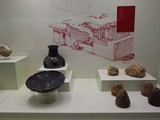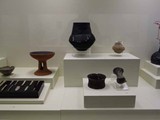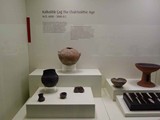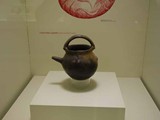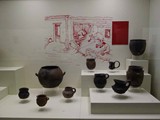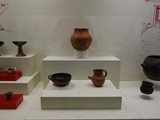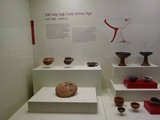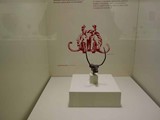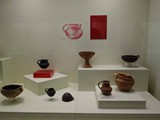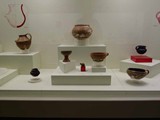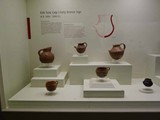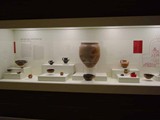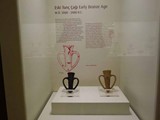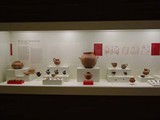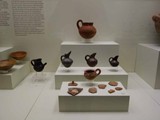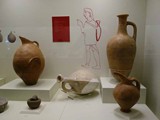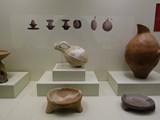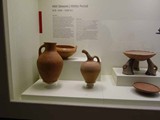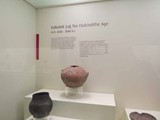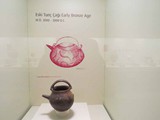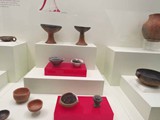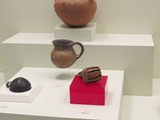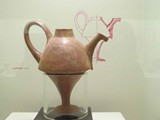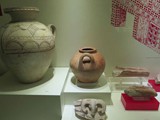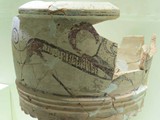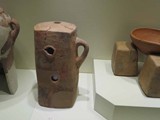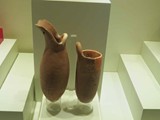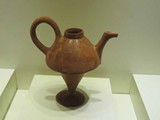 |
| Alacahöyük, Archaeological Museum | |||
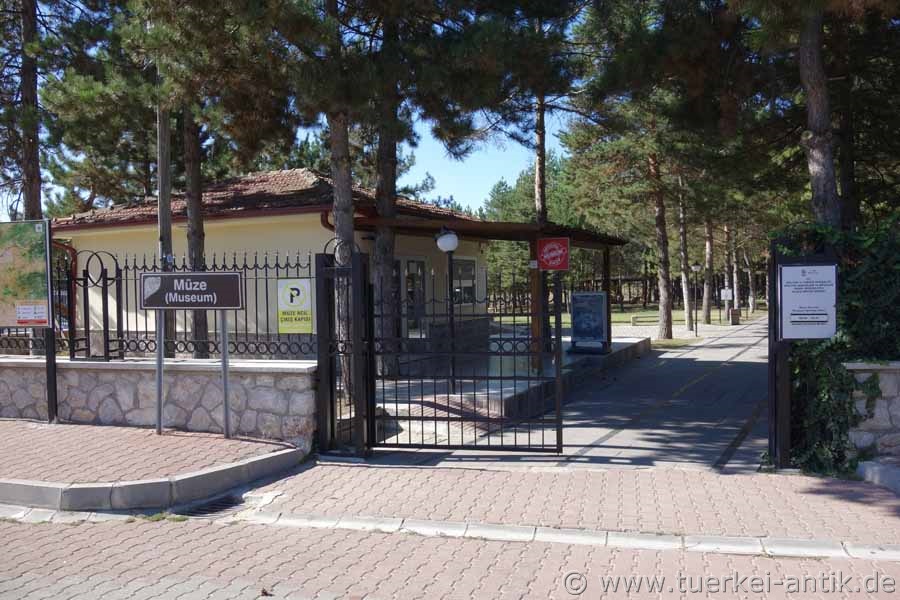 |
|
||
| Alacahöyük Müze | |||
|
Alacahöyük (also Alaca Höyük) is a settlement hill near the village of the same name, 25 km northeast Ḫattua. (Hattuscha), the capital of the Hittite Empire. It is equated with the Hittite Zippalanda (Popko 1994) or Arinna, the cult place of the sun goddess.
Alacahöyük had already been a cult site of the sun goddess since the second half of the 6th century BC. Chr., thus in the middle Chalcolithic. In the middle of the 3rd millennium B.C. it was a settlement of the pre-Hittite, non-Indogermanic hattier, of which the found princely tombs bear witness. |
|||
|
|
|||
|
The Turkish Historical Society (Türk Tarihi Tetkik Cemiyeti), founded on the instruction of Mustafa Kemal Atatürk on April 15, 1931, began in 1935 under the leadership of R.O. Arik with the first national excavations in Alacahöyük. The discovered artefacts were stored in a hall in the village of Alacahöyük and exhibited from 1940. 42 years later, in 1982, the Alacahöyük Museum was moved to its present location, right next to the excavation site. The finds are exhibited in the Alacahöyük Museum, the Museum of Anatolian Civilizations in Ankara and the Archaeological Museum Çorum. |
|||
|
|
|||
|
The collection, which covers two floors of the museum building, consists of finds from all settlement periods, from the Hattierm, the Hittites and the Phrygians to finds from the Ottoman period. Since 1997 excavations have been carried out by the University of Ankara. Since 2009, the German Mining Museum Bochum at the Museum für Anatolische Zivilisationen in Ankara has been investigating metal finds from the tombs of Alacahöyük as part of the project "Metal Finds of the Early Bronze Age Princely Tombs of Alacahöyük" sponsored by the Fritz Thyssen Foundation. |
|||
|
|
|||
|
|
|||
|
to the exhibits |
|||
| Photos: @chim | |||
| Translation aid: www.DeepL.com/Translator | |||
| Source: Wikipedia and others | |||
|
|
|
|

